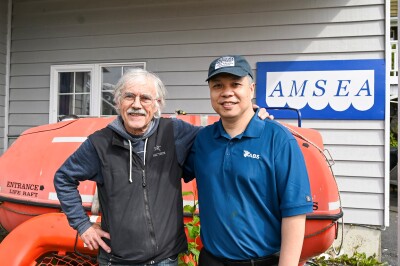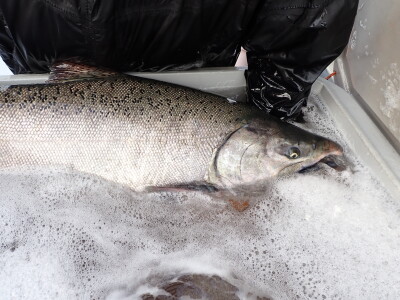Right whales, wrong tactic
Abundant stocks may be a sign of a well-managed fishery, but they will not inoculate you against management miscues, past or yet to come.
Consider the Maine lobster industry. State regulations protect small, oversize and female lobsters, and stocks have been considered stable or better for 60 years.
Efforts to conserve lobsters have been reinforced by rigorous entry requirements for fishermen that go back generations, spelled out both in law and by tradition.
As a result, lobstermen, as much as any group of fishermen, are aware of their long-term stake in the resource. You seldom hear of anyone getting out of the industry, and despite their reputation for clannishness, the lobster catchers have been organized, statewide, since 1954.
Unfortunately, northern right whales were not as well managed, and having been hunted to near-extinction in the 19th century, their numbers have languished ever since.
Scientists estimate there are about 300 left in the western North Atlantic and say that at that level, the recovery of this endangered species is unlikely. In the meantime, however, the concern is that they live to die of old age, an eventuality whose likelihood has been lessened by ship strikes, which are said to account for as much as half of all right whale mortality.
Mentioned in the same breath as ship strikes are fishing gear entanglements, which is where lobster fishermen enter the picture. Conservationists say the floating rope used between lobster traps set along the sea floor in trawls snarls passing whales.
On Oct. 1, by which time many of you will be holding this magazine in your cold, wet hands, NMFS will issue revisions to its large whale protection plan in the Atlantic.
The new rules are expected to mandate that by Oct. 1 of next year, fishermen use sinking line between lobster traps set along the floor in multi-trap trawls.
Lobstermen want the date put off two years to allow time for the development of low-profile line that would settle toward the bottom without hanging up or chafing.
They also want the exemption area in which floating rope could be used moved offshore to the 50-fathom curve, based on research by the Maine Lobstermen's Association that reported sightings of 14 endangered right and humpback whales inside the 50-fathom curve between 1990 and 2005, an average of less than one per year.
Interestingly, the nonpartisan Government Accountability Office reviewed NMFS' revisions to its whale protection plan and found them wanting.
Specifically, the GAO faulted NMFS for failing to resolve "implementation issues" — the operational challenges of using sinking pot warp on rocky bottom, for failing to address the uncertain costs fishermen will face, and for not offering any means of evaluating the benefits to large whales.
The MLA says its members will incur $25,000 a year in additional costs and lost income.
Many of us familiar with lobstering can only scratch our heads at the notion that the fishery has much, if any, effect on the population of large whales. And then there is the somewhat philosophical question of how to justify imposing monumental costs on fishermen in the name of a species with such a tenuous grasp on existence.
For now, however, the answer to that question is that the Endangered Species Act prohibits us from writing off creatures like the right whale and makes reference to the "various species of fish, wildlife and plants [that] have been rendered extinct as a consequence of economic growth and development untempered by adequate concern and conservation."
The whales are also protected under the Marine Mammal Protection Act, which prohibits the taking of marine mammals in U.S. waters and forbids U.S. citizens from taking marine mammals on the high seas.
In short, we're stuck with the right whales. But that fact should not pre-empt common-sense management.
The lobstermen have stepped up to the plate by expressing support for a 10-cents-per-trap tag increase to fund research. They support weak links on buoys (to break under the stress of entanglement) and other gear modifications, and have made a convincing case for low-profile groundlines.
NMFS should take the GAO report to heart, listen to the earnest voices of the lobster industry, and think in terms of 2010.
There's always time for good fishery management.
— Jerry Fraser






